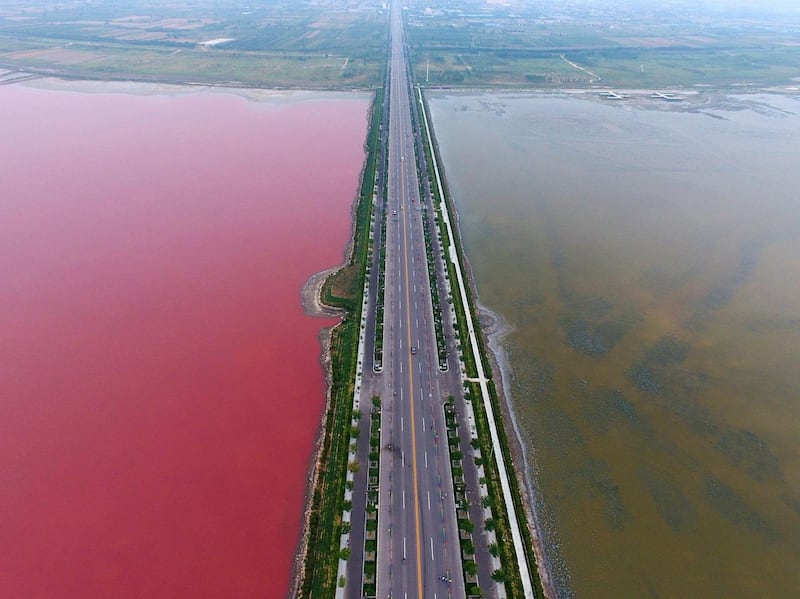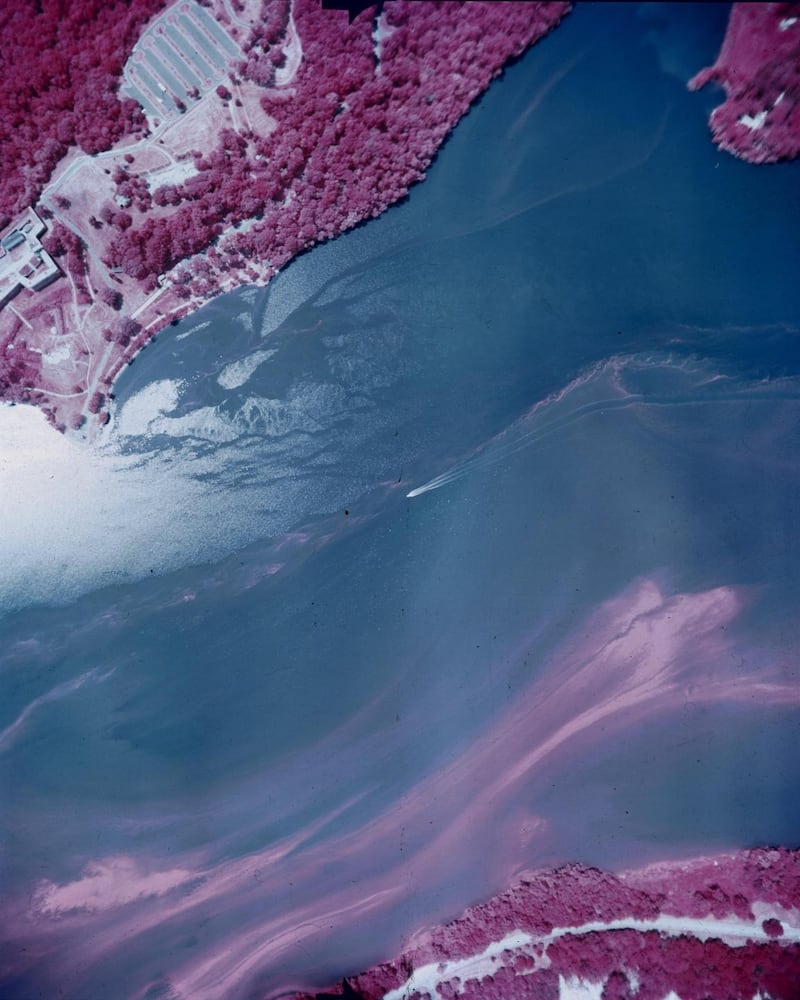On June 14th, a report was uploaded to the Environmental Protection Agency’s website. The document attracted little media attention, but what it revealed is shocking: some of Ireland’s most spectacular waterways – including the legendary Three Sisters Rivers – are saturated with nitrogen pollution.
For years, scientists have warned there’s too much nitrogen in our waters. But this report, for the first time, pinpoints the source of nitrogen pollution, outlines targets for reduction, and identifies the river catchments struggling the most. Scientists are particularly concerned about those in the south and southeast of the country.
Nitrogen is crucial for life, but it’s now so overused that it suffocates rivers, streams, and estuaries and threatens drinking water safety. It’s rocket fuel for grass and crop growth – in an intensive system, without it there wouldn’t be enough grass to feed the cows – but when it’s spread on fields, only 25 per cent is used; 75 per cent is lost to the soil or air, or it seeps into local streams and rivers and winds up in estuaries and the sea. Along the way, it boosts the growth of nitrogen-loving aquatic plants and harmful algae, to the detriment of other species.
Walk across a nitrogen-laden estuary on a summer's evening, and you'll likely see – and smell – a carpet of gloopy green algae. In 2018, scientists warnedthe Argideen Estuary in Cork, which is part of the Bandon catchment, would need a 60 per cent reduction in nitrogen to bring it back to "moderate" status, which itself is far from the gold standard.

"The ecological effects of nutrients in the water are not always obvious on the surface," says Ken Irvine, professor of aquatic ecosystems at IHE Delft in the Netherlands. "But they're changing the structure and function of the ecosystem beneath, and that favours some organisms over others. It risks the loss of those insects and other freshwater organisms which are indicative of good water quality, and can have a direct impact on the suitability of the river for fish such as salmon and trout that require high quality of water."
The catchments seeping in nitrogen are a roll call of some of our most beloved and ancient waters: the Barrow, Suir and Nore, which flow through Kilkenny, Tipperary and Waterford; the Slaney, which rises on Luqnaquilla Mountain and flows through Carlow and Wexford; the Blackwater, which flows through Cork, Waterford and Kerry; the Tolka, which flows through Meath and Dublin; the Boyne, in Louth and Meath; and Cork's Bandon and Lee.
High-quality rivers have negligible nitrogen levels. There are no legal limits of nitrogen in freshwater, but the EPA works off a guideline of 1.8mg per litre; in estuaries, the statutory limit is 2.6mg. This latest data make for grim reading: all of the catchments of concern are above these upper limits, and healthy aquatic ecosystems can’t function. Scientists say that groundwater drinking water supplies are also at risk.
Sewage
The Tolka is grappling with too much industrial and human sewage. Meanwhile, in rural catchments, 85 per cent of nitrogen pollution comes from chemical fertiliser and animal faeces and urine. Where farming is more intensive, say scientists, the nitrogen concentrations in streams and rivers are highest.
“This coincided with dairy expansion – it’s clear but was also predictable,” Irvine adds. He says that up to 2012, previous measures to reduce nitrogen pollution appear to have been effective. “The good work has been undone - now we have this high level of pollution at concentrations which are, from an ecological point of view, a real cause for concern.”
Compared to industrialised countries, where many waterways are highly polluted, Ireland still has relatively good water. But it's the pace of deterioration that's so alarming. In the last ten years, nitrogen concentrations have increased in nearly 90 per cent of the river catchments sampled. At this rate, without reductions, these waters could be set on a toxic trajectory.
"A critical question – with no clear answer – is: are there any tipping points for nitrogen? Are there ecosystems that cannot recover?" asks Prof Jan Erisman, a nitrogen expert at Leiden University in the Netherlands. "There's some indication that systems like peat areas – which are very sensitive to nitrogen – cannot recover fully. But it all depends how fast the nitrogen can be removed."
The Irish State has a legal obligation to protect water quality. As EPA scientists publish data at an ever-more granular level, regulators get an objective understanding of what is happening, why it’s happening and how the pollution can be cut. The situation in the Netherlands shows that when it comes to upholding EU environmental law, if politicians don’t act, then the judiciary will.
The Netherlands is the second-largest agricultural exporter globally, and it's one of the most nitrogen-polluted countries in Europe. In 2015, the Dutch Government came up with an action plan to protect their most important nature sites from nitrogen pollution. It was heavily criticised, and within two years, a small environmental NGO went to the European Court of Justice to challenge the plan, arguing that it failed to protect nature and was not legal. The courts ruled in the NGO's favour.
Dutch politicians had to act. Thousands of industrial developments, including an airport, were halted, and driving speed limits were reduced to cut nitrogen oxide. Livestock agriculture accounts for 46 per cent of nitrogen pollution, and the Government offered farmers money to quit. At the same time, some politicians called for a halving of livestock numbers. Panicked and angry farmers took to the streets to protest at what they saw as the end of their livelihoods.
The Dutch Government came up with a multimillion euro fund for a series of on-farm mitigation measures to cut emissions, such as additives in livestock feed and low-emission housing systems.

An unenviable task
But last year, a dairy farmer in Friesland, who lives near a nature reserve, applied for a permit to construct a new low-emission shed. The case ended up in the courts. In March, the judge ruled that it’s wrong to conclude that such technical measures will reduce nitrogen – thus questioning the Government’s data - and therefore, it’s impossible to rule out that nature won’t deteriorate. The judge refused to grant a permit.
The Dutch agri-industry is dealing with the reality of producing food when polluting nutrients, such as nitrogen, are the new limits. Dutch industry experts predict that by 2030, the volume of milk produced may decrease by up to 30 per cent; if the sector doesn't reach its nitrogen reduction targets, regulators will cut the herd. Meanwhile, some dairy and pig farmers have reportedly moved to neighbouring Belgium, where nitrogen regulations are less stringent.
The Dutch nitrogen problem is on a different scale to Ireland. Still, this latest EPA data forewarns what may lie ahead without rapid action. Slashing nitrogen pollution is an unenviable task for politicians, who must also ensure that farmers can continue to earn a living and repay their farm debts.
Teagasc advised them to expand using a highly intensive, nitrogen-dependent production system; what's needed now is advice on how to wean off this model. With support and a fair milk price, most farmers are undoubtedly up for change. According to scientists, if the levels were effectively cut, we could see positive data within a year.
Dramatically cutting back on fertiliser is essential. Last year, the cooperatives sold just under 380,000 tonnes of nitrogen fertiliser, and it's subject to an effective subsidy of a zero rate of VAT. Earlier this year, in their environmental review of Ireland, the OECD said that removing this concession would reduce ammonia emissions and improve water quality.
Teagasc's dairy planfor 2027 is based on continued intensification and increasing milk production and cow numbers. EPA scientists, meanwhile, say that reducing nitrogen in our waters is a "matter of urgency". Will politicians and policymakers be able to find an effective way to cut this insidious pollutant? Or, as in the Netherlands, will it be left up to the courts to decide?










